Like many of our readers, we were thrilled to learn at Superbooth 2021 that Buchla and Tiptop were teaming up to produce Buchla 200 series modules in Eurorack format. In so many words, this is something people have been asking for and postulating about for years...and now, with the arrival of the first fruits of their collaboration (the 258t dual oscillator and 281t quad function generator), it is a reality.
For many, Buchla instruments present some of the most interesting and adventurous sonic opportunities of any electronic instrument to date. Given their peculiar artistic angle, their rarity, and their relationship to the story of where modular synths came from altogether, they've taken on a particularly mysterious and enticing ethos. For some, the ideas at work in Buchla instruments represent a unique form of musical thought that never quite caught on: like a glimpse into an alternate timeline in which electronic music took a vastly different course (more on that below).
Of course, in the Eurorack modular synth universe, we're used to seeing designs inspired by Buchla ideas—it's quite easy to see Buchla's influence at work in designs from Make Noise and Frap Tools to Industrial Music Electronics, Verbos Electronics, Mutable Instruments, and many others. But Tiptop's approach is unique; by collaborating directly with Buchla USA, they're working to provide as close an experience to an authentic Buchla 200 system as possible in Eurorack format. These aren't simply "inspired by" Buchla designs—these are actual Buchla 200 circuits modified largely just to accommodate the format-specific requirements of Eurorack, such as voltage levels, power supply, connection types, and of course, they are modified in layout to fit into a standard 3U Eurorack rack space. We expect that they will have to make occasional simple component substitutions where necessary—but otherwise, these are as close as you can get to the real deal.
Looking at some classic Buchla modules, like the 258 dual oscillator, for instance, you'd be forgiven for thinking they seem quite basic by modern standards. After all, what could possibly be so special about an analog dual oscillator with basic waveshape outputs? Well, in the remainder of this article, I'm going to endeavor to explain what makes these designs so special...and to do that, we need to first take a trip back to where things started.
The Early Days of Modular Synthesis
Oftentimes, the story of the early days of synthesizer design goes something like this: in the 1960s, many experimental composers were making electronic music with magnetic tape. The process of composing in this way was pretty tedious: it involved recording sounds onto tape, manipulating those recordings (perhaps by processing them through scientific test equipment, possibly by manipulating the tape itself), re-recording the manipulated recordings, splicing together lengths of tape into meaningful sequences of sounds, ad nauseum. While this process of studio composition definitely led to the creation of a lot of interesting music, it wasn't terribly immediate—and many composers and engineers' imaginations were bubbling away, dreaming up a way of streamlining this process.
The story then usually continues that, in the early/mid-1960s, two musician/engineer teams were developing remarkably similar solutions to this problem completely independently of one another. Located on the East Coast of the United states, composer Herb Deutsch and engineer Bob Moog were at work on the early Moog modular synthesizer. At roughly the same time on the West Coast, the composers of the San Francisco Tape Music Center (specifically Morton Subotnick) and musician/engineer Don Buchla were at work on a remarkably similar design. (See above for photos of Moog and Buchla, respectively—images via the Bob Moog Foundation and Buchla USA).
In both of their approaches, the hodgepodge collection of test equipment found in most electronic music studios was replaced by a series of modules of standardized dimensions and power requirements, each installed in a single cabinet. Each module achieved a simple musical function: some generated sound, some modified sound, and some were used to influence the behavior of other modules using a method called voltage control (a concept not invented, strictly speaking, by either Moog or Buchla). These modules were connected together using patch cables; the way that all of the modules were connected together determined how the device sounded and how it could be interacted with. By 1965, each of these teams had completed at least a working prototype of their instruments—and from some perspectives, this marked the beginning of the synthesizer as we know it (though of course...pinning down exactly who invented the synthesizer is a tricky topic beyond the scope of this particular article).
The Prototypical Synthesizer
This was, no doubt, revolutionary—and up to this point, the story is basically true. From there, the historical narrative distorts a bit...and seemingly, it has been distorted for some time. Many people like to paint the subsequent developments in Moog and Buchla's approaches to instrument design as being in conflict with one another—as if the two were in competition with one another to define the de facto standard for how electronic musical instruments should work. Many people refer to this as a conflict between the so-called "East Coast" and "West Coast" schools of synthesis/instrument design. But the truth is that, while both Moog and Buchla did have quite distinct approaches to instrument design, there was no heated competition...and each of them had quite distinct goals.
Moog often said that he was primarily an engineer, and not a musician. As such, he worked closely with musicians in order to determine how his new instrument should work, and how it should be played. Many early design decisions aligned his approach with adventurous musicians who sought a way of making new sounds—but whose music often maintained the types of rhythmic, harmonic, and melodic organization that already defined Western music. For instance, Moog's instrument, from its earliest commercial availability, contained a black-and-white mechanical keyboard. Thus, it attracted keyboardists, who continued to play it like a keyboard, and to make the sort of music that they knew a keyboard to be able to make. That...makes sense. (See below for images of an original Moog modular system, keyboard and all.)

With some luck and a number of coincidences, these instruments found their way to the hands of musicians like Keith Emerson and Wendy Carlos, who through example showed the world that the synthesizer was a serious instrument fully capable of making everything from insane, unheard sounds all the way to virtuosically-executed electronic renditions of Bach. This got a lot of attention, and these and other musicians early on heavily influenced the popular opinion of what a synthesizer was good for altogether. Meanwhile, the success of these musicians left many engineers eager to emulate or improve upon the Moog synthesizer design, adding their own twists and tricks. In the late 1960s and early 1970s, Moog (the company) and others also sought to build more compact, user-friendly synthesizers, often looking to the architecture of Moog modular systems as a conceptual model. Through several generations of iteration at Moog, several generations of outside designers offering their own spin on Moog's ideas (and one another's), and several years of music created with these instruments, the prototypical idea of the synthesizer was born.
And today, when you say "synthesizer," most musicians imagine something from this very lineage. For most, a synthesizer is a keyboard instrument. It usually contains oscillators and a noise source which get mixed together and sent through a resonant filter. The filter passes to an amplifier, and the oscillators, filters, and amplifiers can be controlled by ADSR envelopes, LFOs, perhaps even a sample & hold or a simple sequencer. Most standalone synthesizers follow this mold to this very day—the Moog DNA is still quite clear.
But what about Buchla? What were his instruments like?
What's So Special About Buchla?
As stated above, Buchla's goals were quite different from Moog's...and this can largely be attributed to the fact that, while Moog was an engineer following the advice of his musical colleagues, Buchla himself was a musician. And while Buchla did collaborate with experimental musicians like Morton Subotnick and Ramon Sender on the details about how his instrument would work, he had his own musical ideals and instincts to fall back on—and in that way, he had a more consistently evolving approach than Moog. Moreover, Buchla was less concerned with making a living than he was with his artistic research: he was simply driven by making instruments that took advantage of what electronic instrument design could uniquely allow that would not be possible with acoustic instruments alone. By nature, this was a highly conceptual approach which led to the creation of fairly unconventional music.
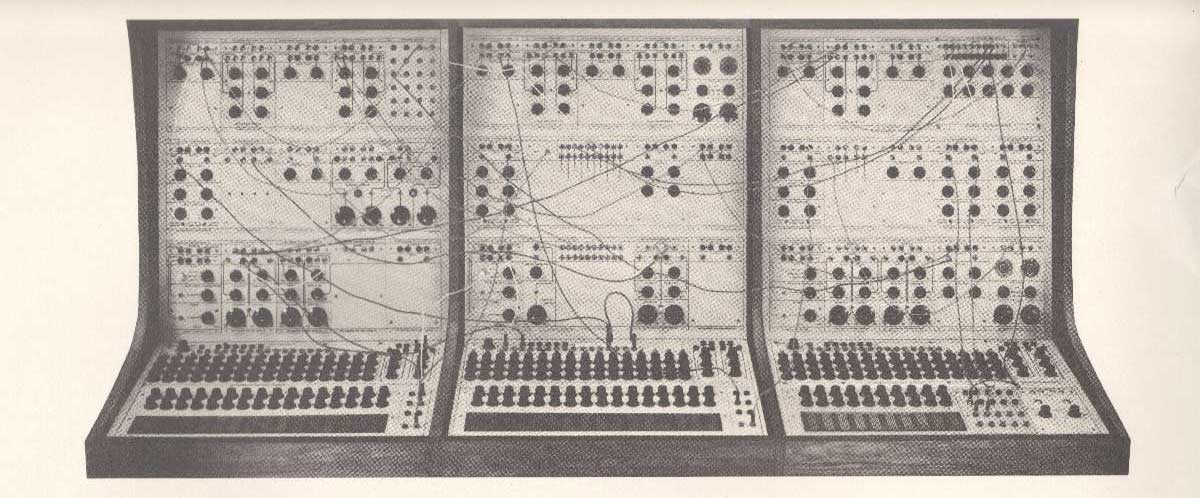
As such, there was a fundamental difference in methodology between Moog and Buchla's early instruments. Moog's instruments were designed in such a way that, despite being quite capable of otherworldly sounds, they were often used to create otherwise fairly conventional music, organized in terms of notes, rhythms, and harmonies. Buchla's early instruments (the 100 Series specifically), however, were a bit more foreign to the average musician: their only means of tactile control (cables and knobs aside) were open-ended touchplate-based controllers. They relied on creating complex, peculiar timbres by using audio-rate oscillators to influence one another's behavior; and they relied heavily on internal automated processes, not necessarily needing human interaction in order to make complex arrangements of self-organized sound. They were, ostensibly, experimental devices created for the purpose of experimental music. Could you program a melody on them? Yeah, certainly—but the lack of any familiar musical interface and the embrace of quite complex sounds meant that they didn't lean quite as heavily toward the "familiar" as did Moog's instruments.
Moreover, Buchla was relatively unconcerned with financial success, whereas much of Moog's early proliferation can be attributed to quite inventive and probably partly-accidental sales tactics which built the foundation of the synthesizer market altogether. Buchla simply never "caught on" (and never really tried to "catch on") in a marketplace that Moog (the company) was forming around its own strengths. (Note: I'd strongly suggest reading Pinch & Trocco's Analog Days: the Invention and Impact of the Moog Synthesizer for more context on this topic.)
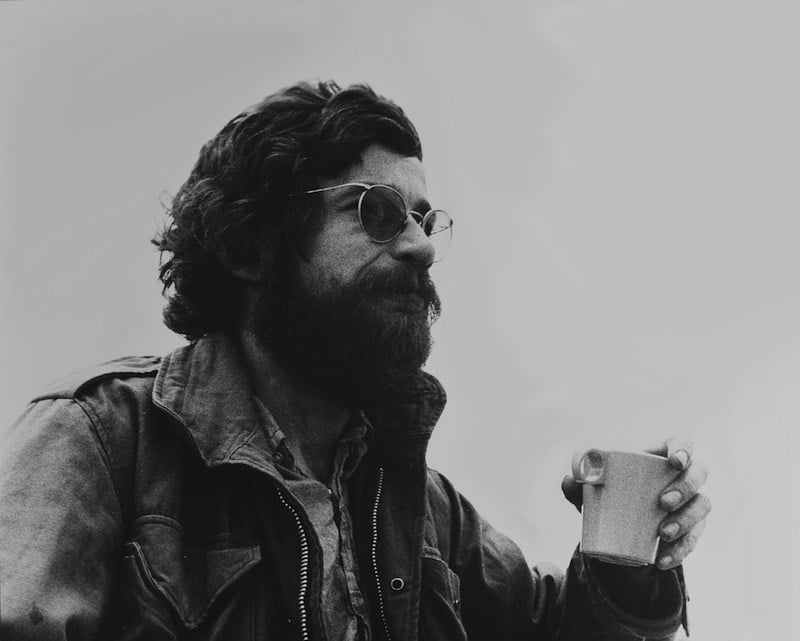
What's particularly interesting about Buchla, though, is that his early instrument ideas developed largely in isolation. There wasn't any way of defining what ideas were good or bad, what sounded right or what didn't, etc.: no one had ever made an instrument like that before, and as such, he had very little to go on other than the peculiar musical vision of his collaborators and himself. From there, he continued to be influenced by developments in both technology and experimental music—but he was also significantly influenced by the behavior of his own designs. To me, this is one of the biggest differences between the Moog and Buchla approaches to instrument design: Buchla was a musician who continued to refine his ideas largely based on his own use of his instruments and his own artistic/conceptual vision, as well as the experiences of his equally experimentally-minded colleagues. So, starting from nothing and relying primarily on his own peculiar musical ideals, he developed a highly idiosyncratic approach...one which, unlike most others of the era, largely ignored market trends in favor of exploring whatever seemed possible or inspiring to him. His instruments became more complex with each generation, digging layers deeper into the unique potential of electronic sound and human/machine interaction with each new device.
Sometimes I feel that, in retrospect, Buchla's no-holds-barred exploration of his artistic ideals seems almost impossible to have achieved. None of his instruments were produced in large quantities. They almost always operated on the edge of what was technologically possible at the time, which in turn meant that they were remarkably expensive—yet he went into each new endeavor with full commitment, and ultimately left the world with dozens of incredible, unusual, and surprisingly complete/well-thought-out designs.
However, the scope of his achievements also feels as if it is at odds with the scale of their influence. While Buchla's name has been relatively well-known to people in the academic and experimental electronic music fields from the 1960s onward, he remains a fairly obscure figure in the scope of music altogether. It still seems safe to assume that most musicians would recognize the name "Moog" before they would "Buchla." Buchla's influence is certainly more alive now than ever, of course; synth manufacturers look to his early instruments as inspiration more often now than ever before, and idiosyncratic "Buchla" sounds/techniques are more and more well-known every day. But why do modern instrument designers care so much about him?
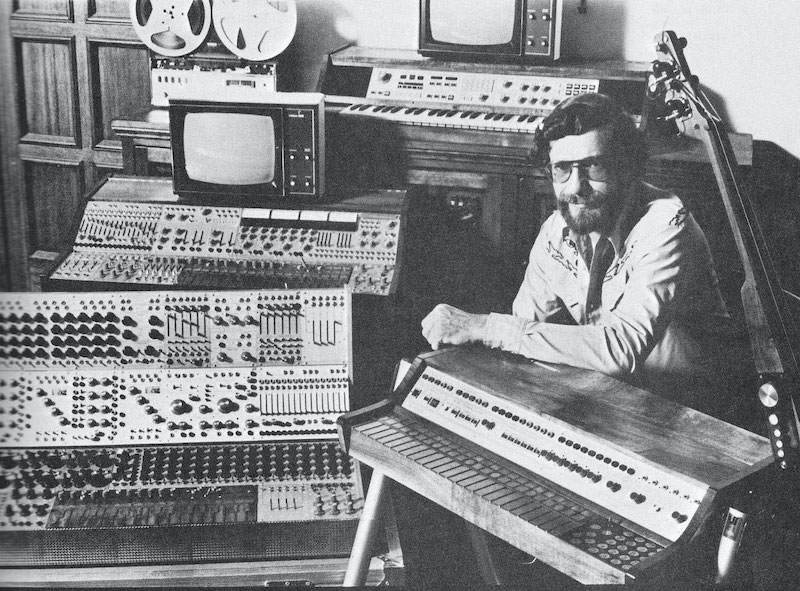
Speaking for myself, I can't shake the bizarre feeling that Buchla's instruments belong to a future that never happened. It's easy to see the course of synthesizer development following the mold that Moog established, whether intentionally or unintentionally. In a way, it feels almost as if a difference of only a couple of events could have led to a very different modern musical landscape. And despite being developed decades ago, Buchla's modular synthesizers were constantly on the edge of what technologically was possible: so today, they maintain a sense of being simultaneously quaint and crude in some respects while completely futuristic or even unparalleled in others...a type of dissonance I find quite compelling. For much deeper thoughts about this topic, I'd strongly recommend checking out our other articles East Coast Synthesis vs. West Coast Synthesis and What is West Coast Synthesis...Really?
And that leads us to today—where a mutual love for vintage Buchla designs has led Tiptop Audio to team up with modern-day Buchla USA to present 1970s Buchla 200 modules in Eurorack format: presenting the most affordable and easily available Buchla-derived hardware designs ever created. But of all the instruments Buchla made...why resurrect the 200 Series?
What's So Special About the Buchla 200 Series?
So far we haven't gotten into many specifics about the differences between different generations of Buchla devices...which is a rabbit hole all its own, well deserving of its own extensive discussion. Suffice to say, though, that for many the 1970s 200 Series was the pinnacle of Buchla's modular instrument designs. But what's so special about these particular instruments? What makes them the focus of Tiptop/Buchla USA's modern renaissance?
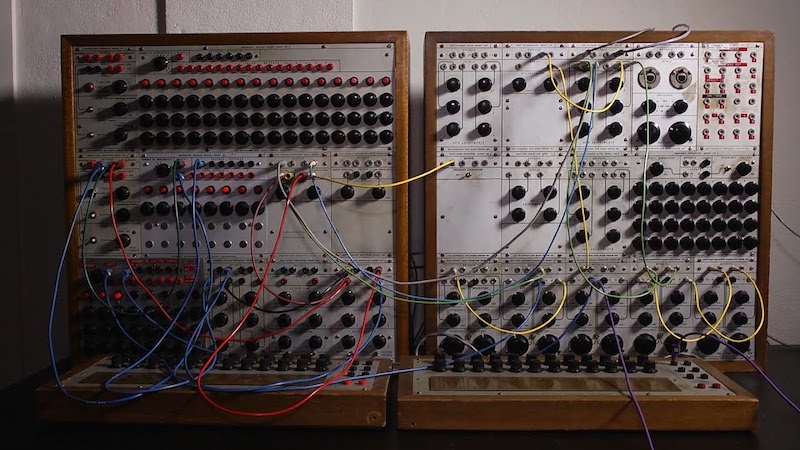 The first Buchla 100 system—image via Waveshaper Media on YouTube
The first Buchla 100 system—image via Waveshaper Media on YouTube
Buchla's first instrument—created in collaboration with members of the San Francisco Tape Music Center—was the Buchla 100 Series. The 100 Series was based almost entirely on discrete designs, before the advent of many modern commercially available integrated circuits. As such, it was relatively crude in execution. Being the first manifestation of Buchla's musical ideals, though, it's easy in hindsight to see it as a blueprint for what was eventually to come. In the late 1960s, Buchla sold the 100 Series designs to CBS (who seem to have been on a musical-instrument-manufacturer-acquiring spree, following 1965's purchase of Fender), and quickly moved on to release the 200 Series himself...an instrument that refined all of the 100 Series's ideas by integrating lessons learned from years of hands-on experience actually playing the instruments...a luxury that obviously was not possible when designing the 100 Series. After all, when you're inventing something completely new, you're not likely to get all the details exactly to your liking on the first try.
The key innovation at work in the 200 Series that sets it apart from the 100 Series (and from most other modular instruments of the time) is that dang near every significant parameter on dang near every module is voltage-controllable. Voltage control isn't just used for changing oscillator pitches or a VCA's loudness—instead, you can also voltage-control an oscillator's waveshape, the currently active stage of a sequencer, or even the degree of randomness imparted to some other part of your patch. Of course, the addition of voltage-controllability to most parameters came along with an enormous host of highly specialized control voltage sources as well. You weren't limited to simple ADSRs, LFOs, or sample and holds; instead, you could reach to the Source of Uncertainty (a stochastic voltage generator), to a 5-stage voltage-addressable "sequential voltage source," to envelope followers, touchplate keyboards, mechanical black-and-white keyboards (yep!), and much more.
And beyond that, the options for sound generation and manipulation were a trip on their own: oscillators with complex waveshaping options (the first of their kind), lowpass gates (the first of their kind), variable-bandwidth filters, a voltage-controllable ring modulator/frequency shifter, quadraphonic mixers...the list goes on. All of this combines to make a highly sophisticated, highly specialized, and just downright fascinating instrument ecosystem—one that, given the lens of hindsight, I am constantly surprised ever even existed. This combination of remarkably complex control voltage sources, remarkably nuanced sound generation, remarkably colorful sound processing, and extensive implementation of voltage control is what makes the Buchla universe so enticing, and what made these instruments so groundbreaking at the time of their release.
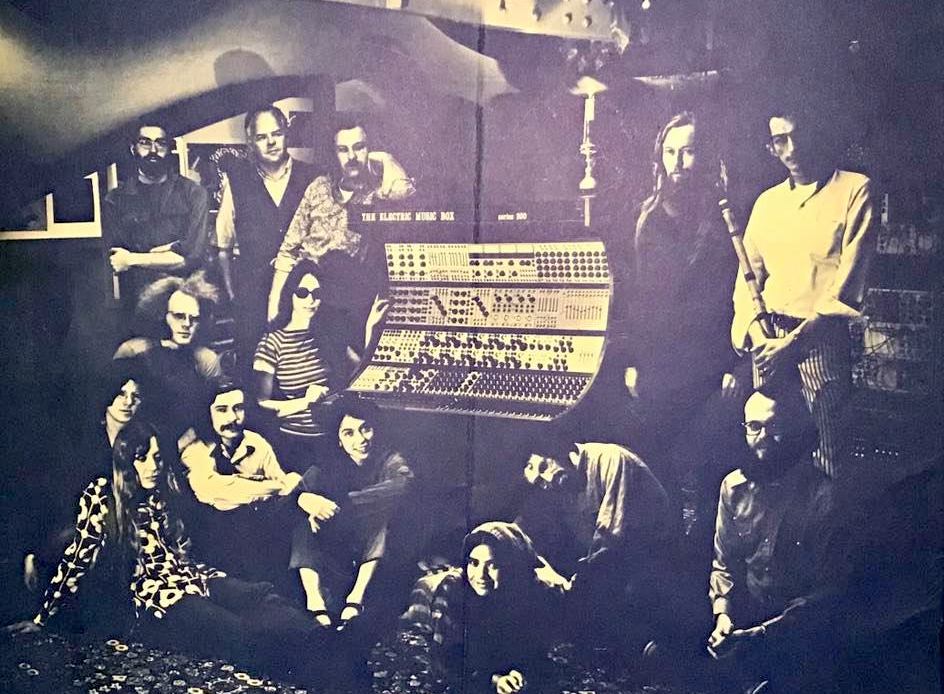
And that is why the 200 Series makes sense as the Buchla design to revisit: despite the fact that Buchla continued onward designing instruments his entire life, and despite the fact that the modern day 200e (a unique 21st century re-imagining of the 200 Series) is still available from Buchla USA, there's an undeniable charm, peculiarity, and historical resonance that makes the original 200 Series worthy of revisitation. What's more, by modern standards, many modules from the original 200 Series are not technologically terribly complex—and given the infrastructure of modern Eurorack companies like Tiptop Audio, faithfully reproducing these isn't only achievable...it's affordable in a way that no other Buchla instrument ever has been.
The Beginning of the Tiptop / Buchla 200t Series
As of their initial announcement, Tiptop has revealed plans to release six 200 Series modules in Eurorack format—the 258t dual oscillator, 281t quad function generator, 245t sequential voltage source, 257t dual voltage processor, 266t Source of Uncertainty, and 292t quad lowpass gate. They haven't made specific promises of further modules to come, but it's safe to say that there are plenty more 200 Series modules worth developing. For now though, let's talk about the modules they've announced and what makes each of them a sensible first step in recreating that classic Buchla ethos—starting with the 258t and 281t, each of which have already begun shipping as of the time of publishing this article.
The Buchla 258 was the original oscillator in the 200 Series. Many of us think of the "Buchla sound" as being defined by a "complex oscillator"—a dual oscillator with a complex waveshaper and internal modulation routings. However, that isn't what the 258 is: in fact, the 258 on paper appears to be a considerably simpler design. The 258 contains two fully independent oscillators, each with a waveshape crossfading control. The top oscillator's waveshape control continuously blends from a sine to a saw shape, while the bottom oscillator can continuously blend between sine and square shapes. These aren't mathematically perfect shapes, either...they're classic, kinked, slightly warped shapes that sound absolutely stunning. The waveshape "blend" of each oscillator can be voltage-controlled. Each oscillator also contains multiple means of controlling the pitch. On the 258t, each oscillator has a single 1V/Oct input, a single DC-coupled, exponentially-scaled input with a dedicated attenuverter, and a dedicated AC-coupled linear FM input (the original lacked the pre-scaled pitch input, and instead featured a second "processing" input featuring what we now call an "attenuverter").
So...what's so special about all that? Admittedly, on paper it may not seem like much—two oscillators with some basic waveshapes (albeit with voltage-controllable shape) and a pretty straightforward feature set. Well, to me, the magic of the 258 lies in the combination of a few specific features. The first is that the CV response is the slightest bit sluggish...oftentimes, it seems to take a quick moment for the oscillator to "settle in," giving it a subtle rubbery looseness. The second is that the oscillator frequency ranges are insanely wide...considerably wider than I would usually consider necessary for musical purposes. The large coarse frequency knobs have a stated range of 5Hz to 20kHz, and with external CV, they can be pushed well outside these boundaries in either direction. You might wonder...why the heck would I want an oscillator with such a wide range? And that brings me to the third factor: the FM inputs on the 258 have a considerably more dramatic range than any other oscillator I've ever used. The FM gets deep enough that the FM source can often seem to tear through the sound of the carrier oscillator—and at high FM amounts, the sense of pitch or stability completely disappears in favor of huge, clangorous, and sometimes quite chaotic sounds. Try cross-modulating the two oscillators (using each to FM the other) and you'll uncover an absolutely peculiar universe of shrieks, howls, sputters, interstellar cackling dolphins, fizzy sounds of broken radios, and other entirely unimaginable things both charming and horrific. It can be soft and gentle when listening to a sine wave, huge and full-sounding with a square or saw, and absolutely brutal and terrifying with the right dose of FM. The 258 is my favorite oscillator...probably ever.
The 281t is Tiptop's recreation of one of the most significant parts of the Buchla 200 control voltage generation scheme: the quad function generator. Comprised of four independent envelope generators, the 281t can do everything from simple attack/decay (AD) or attack/release (AR) envelopes to complex, interlinked, ever-changing cascades of multiple modulation signals. It's a stellar way to achieve simple envelope behavior, but it's also a great place to go for complex, knotted, interwoven control of multiple parameters all at once.
Each function generator features an attack and decay control, each with its own dedicated CV input, allowing for voltage-controlled envelope shapes (a significant musical opportunity missing from original Moog or Buchla 100 systems). Each envelope has a trigger input, an envelope CV output, and a trigger output that fires at the end of the envelope cycle. A dedicated switch allows you to set each envelope to AR, AD, or cycling mode, in which the envelope begins to behave like a shape-able low-frequency oscillator. A dedicated pulse input for "cycle" behavior allows you to use external gates to momentarily engage/disengage cycling.
The 281 also features two analog OR outputs, which compare the A&B or C&D envelope level respectively, producing whichever of the two is higher in voltage at any given time. Using the large knobs, you can scale the levels of channels B and D before the comparison process, making it possible to generate quite complex shapes using each pair of envelopes. The "quadrature" switches at the bottom right of the module allow you to create complex linkages between channels A&B or C&D, respectively. When quadrature is engaged on A-B, for instance, triggering channel A will execute A's attack stage; then, at the end of A's attack, it holds at a high voltage and triggers B's attack; at the end of B's attack, B holds at a high voltage and A's decay stage begins; at the end of A's decay stage, B's decay stage begins. You can use this to program quite complex envelope shapes with delay and hold stages, or you can patch B's trigger output back into A's input to create an ever-fluctuating pair of signals that respect one another's motion. Combined with the stage duration CV inputs and analog OR outputs, this can get quite complex. All in all, if you need to program an envelope or LFO-like behavior, or if you need to create a complex knot of fluctuating signals or triggers, 281 is sure to delight.
One other particularity that makes the 281t (and forthcoming releases) different from the original Buchla module is that all of the jacks are 3.5mm, standard Eurorack patch points, whereas Buchla 200 systems use 3.58mm Switchcraft Tini-Jax for audio signals and banana jacks for CV/pulses—a concept perhaps peculiar to Eurorack users, who are used to using the same cable type for all signals. I'll save discussion about the separation of CV/audio signals for another article, but suffice to say that there are compelling reasons for not commingling these signals. However, there are perhaps just as many reasons to keep things more fluid—and as such, in order to honor the original Buchla look and functionality, Tiptop uses colored nuts for all patch points that originally used banana jacks, and metal nuts for all "audio" signals. Of course, one of the most exciting things about this series is that you don't necessarily need to follow the rules...and in fact, musicians like Todd Barton have already begun to show us what peculiar things can happen when you treat, for instance, Buchla envelopes like oscillators, or Buchla oscillators like LFOs. There's a lot of territory there ripe for exploration.
Tiptop / Buchla 200t Series: The Next Steps
The next planned modules for this series are the 292t, 257t, 245t, and 266t, each representing critical parts of the Buchla 200 Series ecosystem. We'll take a closer look at all of these as they are released, but let's take a quick overview here.

The 292 is Buchla's quad lowpass gate—a vactrol-based circuit which imparts a lovely natural coupling of loudness and brightness. Its gentle ring/sluggishness provides a highly natural-sounding response that pairs beautifully with complex FM tones and waveshaping, defining much of what we think of as the "Buchla sound." This is a critical piece of the puzzle, as it represents one of the other notable differences between the Buchla audio path and the rest of the synth universe: a basic absence of conventional filters and VCAs in favor of this more esoteric and compelling means of controlling a sound's brightness and dynamic profile.
The 257t is a voltage processor, capable of mixing, attenuation, inversion, VCA-like behavior, voltage-controllable crossfading, offset generation, and basically any other function that is comprised of a combination of these processes. It's an excellent pairing with the 281, for instance, allowing more highly nuanced shapes and CV mixing. The 245t is a four-row, five-step sequencer (yes, five steps) with a built-in clock generator. It allows for traditional CV and gate sequencing, but can also be addressed with external control voltages, turning it into a low-resolution customizable quantizer...or, you can think of it as a way of storing and retrieving five voltage "presets," which can be accessed in any number of ways.
And of course, the 266t is Tiptop's rendering of the famous Source of Uncertainty—a cornerstone of the 200 Series. The Source of Uncertainty is Buchla's random voltage generator, but it goes much farther down the "random" rabbit hole than any other instrument did at the time. The Source of Uncertainty is a stochastic voltage generator with two continuously fluctuating random voltages, two triggerable "quantized" random voltages with a voltage-controllable number of potential states, triggerable "stored" random voltages with voltage control over probability distribution, a voltage-controllable slew limiter, and a complex polyphonic sample & hold. All of these functions combine to create a module capable not only of randomness, but of highly controllable randomness—much more refined than a simple noise-into-sample-and-hold patch.
Looking Back and Looking Forward
All in all, we're quite excited about the prospect of all of these modules being available. Not only is it amazing that they're available in Eurorack format (a much more common ecosystem than 4U Buchla), but they're available at a remarkable price—and while prices for the latter four modules are not yet finalized, if the 258t and 281t are any indication, Tiptop will be able to keep this line of quite affordable/accessible...taking one of the most esoteric, rare, and mythical modular systems and presenting it in a way where it will reach and inspire more musicians than ever before. Buchla USA, of course, is still offering their own highly complex and beautiful instruments in the form of the 208c-based Easel series and 200e system...but it's amazing to be in a world where there's an option for musicians to explore the Buchla synthesis ideology on a considerably smaller budget.
We look forward to the next developments from Buchla and Tiptop! But if you're curious to learn more now, be sure to check out our other articles East Coast Synthesis vs. West Coast Synthesis and What is West Coast Synthesis...Really?, which dive deeper into the history of the "coastal" divide and Don Buchla's work altogether.
















